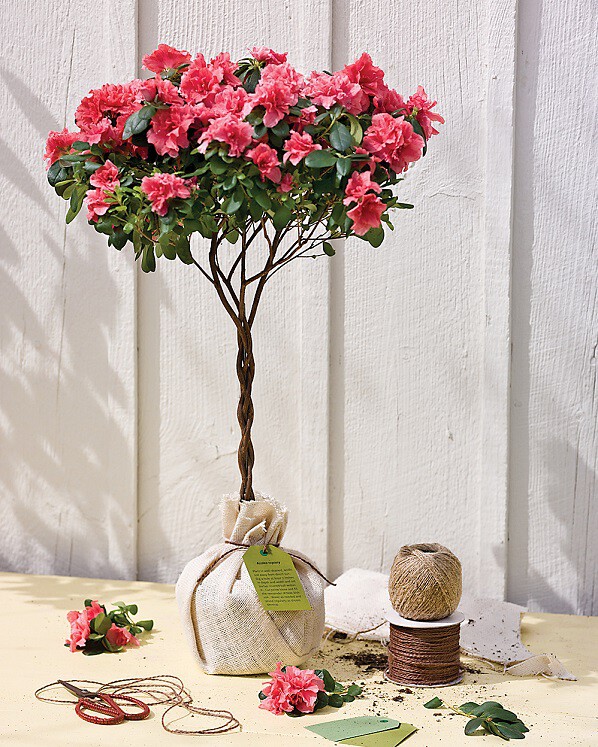There are pros and cons associated with each, so it's important to choose the option that makes most sense for you.

You've got the perfect spot for a new tree in your yard, and the choice is either one that's grown in a field (called ball and burlap, otherwise known as B&B) or in a pot (container tree). Each has different plusses and minuses: It's really a matter of which one serves your needs better. What criteria should you use in deciding which type of tree to get? Specific details like growth rate, how heavy the trees are, and their availability are incredibly important. Read on for a comparison.
Weight
Sean Duffy of Stone Mill Gardens in Northern New Jersey explains that B&Bs are grown in soil, then wrapped in burlap, which make them heavy and somewhat difficult to deal with. Potted trees aren't grown in soil but rather in lightweight materials like peat moss and bark. This makes a big difference, weight-wise, when transporting and handling your tree. If you're looking for a tree you can easily pick up and plant yourself, a potted option might be better; however, if you're working with a landscaper or feel like you can get the job done with the help of another person, you could certainly consider at B&B.
Growth
B&Bs, which are generally harvested in the spring and fall, are slower to grow because their root system was severed in the process. Potted trees grow faster because their root systems remain intact since they were started in a pot and have more dirt to work with. If you're nervous about your tree becoming established and beginning to grow fast, potted might be the way to go, as Duffy says that B&B trees may take longer to acclimate to their planting conditions.
Availability and Size
Most trees can be purchased and planted at any time of year, so long as the ground isn't frozen. Since B&B trees are only harvested during certain seasons, you may have to wait to find what you're looking for until your local garden center has it available. On the upside, burlap disintegrates, so it doesn't need to be removed prior to planting, Duffy adds. You can find both B&B and potted trees in a variety of sizes, but you'll generally find the largest trees available as B&B.
Transplant Shock
B&Bs get the shock of their lives when their root systems are cut at harvest time; it could take up to a year to grow back completely. Potted trees, on the other hand, never experience even a mild shock when being transplanted since their root systems remain untouched. If handled correctly and given the right growing conditions, the trees will take to their new homes quickly.
Drought-Sensitivity
B&Bs are highly tolerant of drought conditions since their roots regenerate and grow quickly. Potted tree can't boast the same trait: Their root balls have many fine hairs that dry out the containers and make them more sensitive to a lack of water. For this reason, Duffy says it's important to plant a potted tree sooner, or else keep a close eye on the soil to make sure it's staying well-watered in its container.
Cost
Duffy says there isn't a major price difference between B&Bs and potted trees-pricing depends on the size and type, not how it's sold.